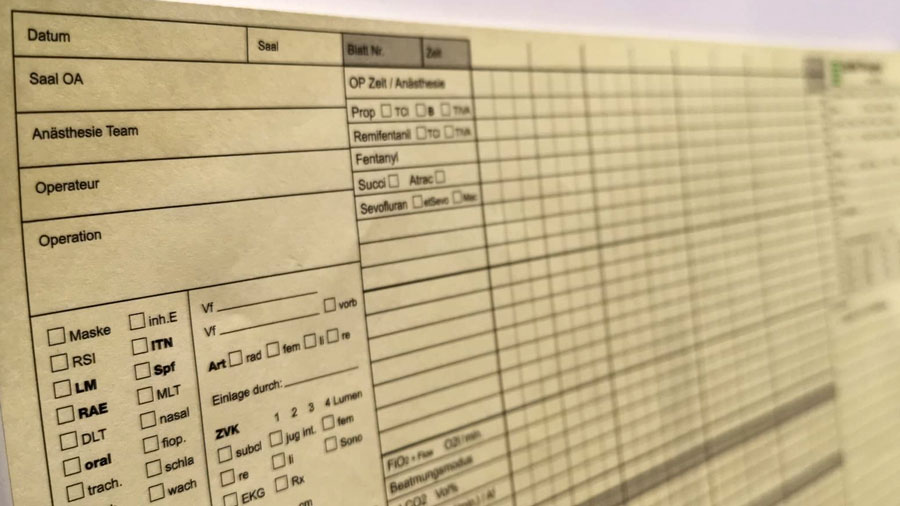KISIM: logbook for anaesthesia
Zurich based company cistec hired me to design an electronic logbook for anaesthesia for KISIM, their hospital information system.
The assignment was to design an electronic logbook which allows anaesthetists and nurses to record all relevant information before, during and after surgery. The goal was to reduce error rates and tie the reporting to the rest of the patient's history, which is already in the hospital information system.
| Client |
cistec clinical information systems |
| Key Activities |
Stakeholder and User Interviews, Prototyping, Usability Testing |
| Status |
Under Development, internal use only |
| Deliverables |
Prototype, Documentation |
The scope
Surgeries are events with a high density of information. Nurses and anaesthetists make records of all information relevant to the patient's state and the course of the operation. They do this on paper, which has several shortcomings, such as errors due to illegible handwriting or entries with a faulty value. They do this on outdated forms that do not reflect today's requirements for operational reporting.
cistec is working closely with the anaesthesia staff of the Balgrist Hospital in Zurich to develop this module. The anaesthetists had put together a list of requirements for the electronic logbook before I joined the project. The document reflected their expectations of what the software would be able to do. However, it contained little information regarding chronology (what is done when) or choreography (who does what).
Finding the pieces of the puzzle
I had very little time allocated to do interviews with the anaesthetists and their nursing staff. They were sceptical of the approach of "the designer asking questions". I decided to put together a rough prototype of the most critical and busy phase of anaesthesia, the induction, as a starting point and base for discussion. The induction is where the patients are brought into unconsciousness.
The idea was to discover the chronology of the events with the staff. This strategy helped me to understand that anaesthetists go through surgery in distinct phases with varying work-loads. They want to make rough log entries during the busy induction phase and then detail them when they have more time during the surgery phase. "
Iterating through the phases
The medical staff saw the benefit of working with a prototype right from our first meeting. They loved how real it felt and could give valuable input to what worked for them and what didn't.
We iterated through all the phases of the surgery and could focus on building a process that was complete and covered medical, regulatory and technical requirements.
The process will replace paper-based records. It will compete against the ease of use and forgiveness of paper: anaesthetists can quickly take single notes on paper, be they legible or not. The goal for taking notes in the digital version was to reduce writing as much as possible and offer smart defaults through the whole experience.

